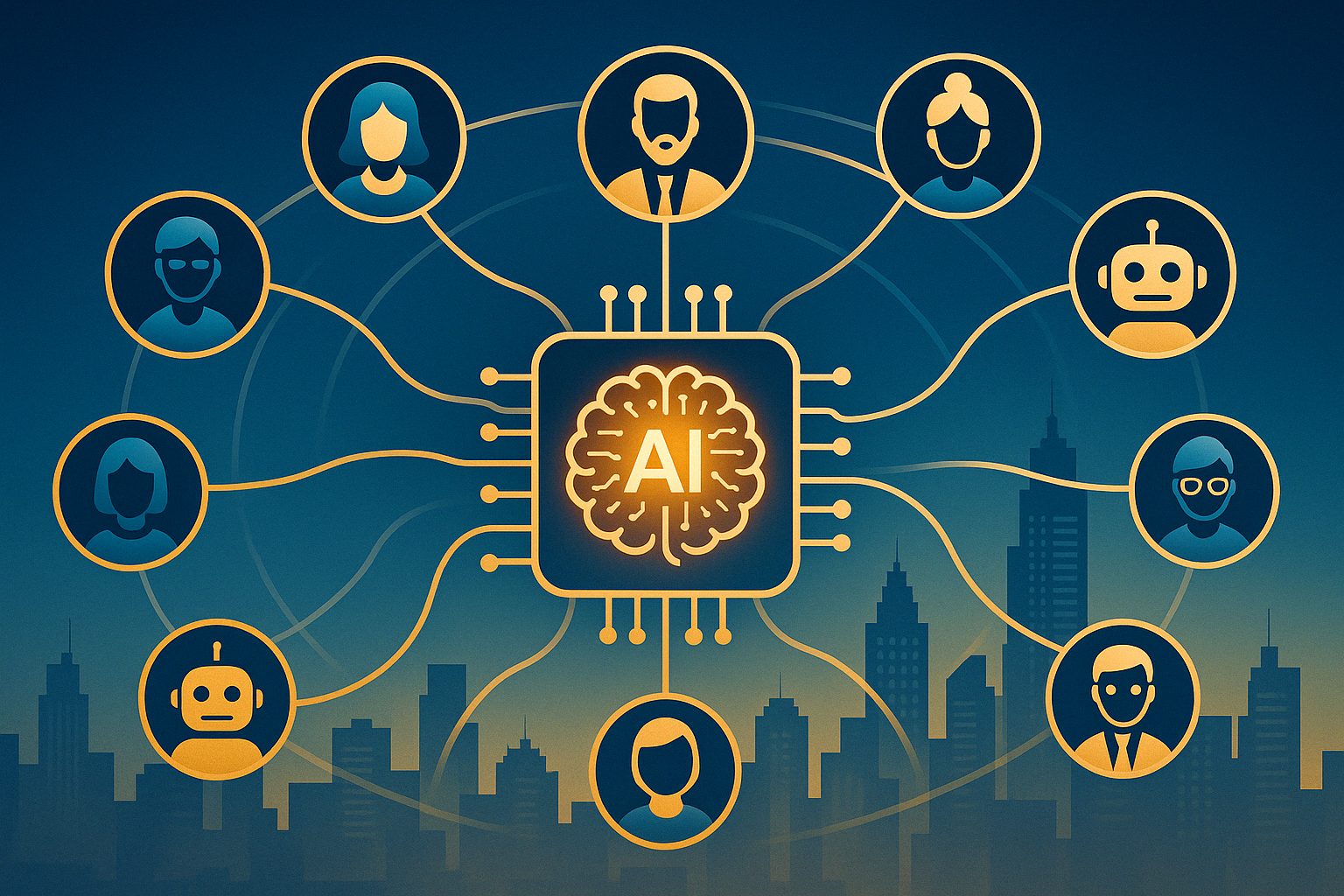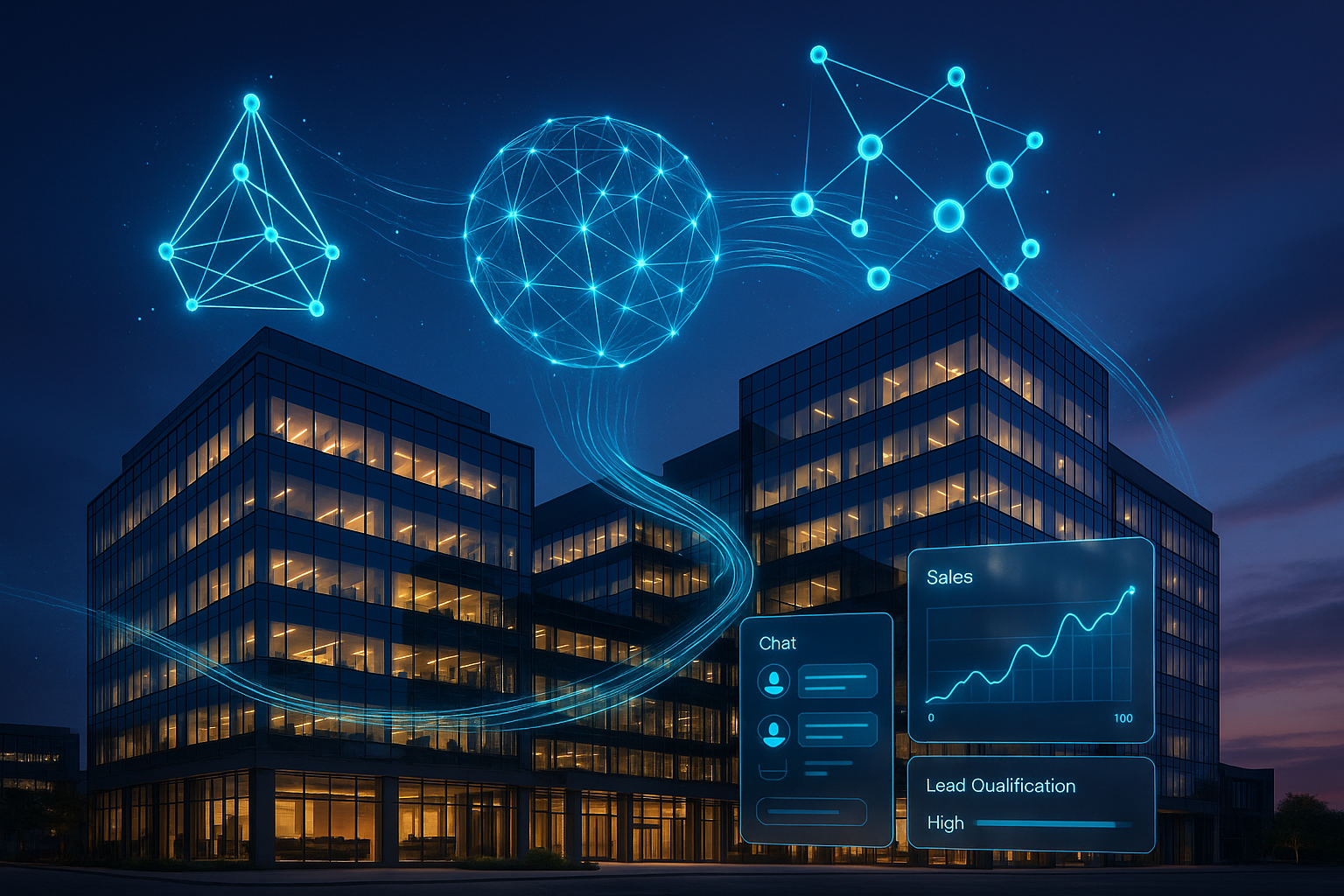
AI Agents Explained: From Copilots to Virtual Workers
Caiyman.ai Research Team
AI Solutions Architect
From chatbots that draft emails to autonomous agents that close tickets while you sleep, AI is crossing the threshold from conversation to action. If the phrase “AI agent” still feels hazy, this explainer will anchor the concept, map the emerging taxonomy, and show why businesses are racing to deploy agents across entire value chains.
Defining the AI Agent
An AI agent is a software entity with enough reasoning, memory, and tool‑use to act on behalf of a human or system. It interprets a goal in natural language, decomposes that goal into tasks, selects appropriate tools (APIs, browsers, or shell commands), executes, monitors results, and iterates until done. Large‑language models supply the linguistic intelligence, but specialist models often join the party to make domain‑specific decisions.
A Tour of Agent Types
McKinsey groups production‑ready agents into five overlapping buckets:
- Copilot agents that augment an individual—think Microsoft 365 Copilot helping you summarize a meeting.
- Workflow orchestrators that stitch together multistep business processes, such as Salesforce’s forthcoming Agentforce.
- Domain‑native solutions that embed AI at the core of a vertical, e.g., autonomous customer‑service desks.
- AI‑native operating models where the entire enterprise is re‑architected around fleets of agents.
- Virtual workers—agents hired like employees, paid in compute cycles instead of salaries.
Most firms will mix and match: roll out personal copilots first, then automate high‑friction workflows, all while piloting a few virtual workers in non‑critical roles.
How Agents Actually Work
Behind the chat UI lives a multi‑agent system resembling a project team. A manager agent receives the user request, drafts a plan, dispatches specialist subagents, and evaluates their outputs. Subagents might search corporate wikis, call pricing APIs, or write SQL. Feedback loops, critic agents, and escalation policies keep the system on track and mitigate hallucinations. Because agents can call the same human tools we do—web browsers, spreadsheets, code repos—they integrate with legacy architectures instead of demanding wholesale rewrites.
The Business Upside
McKinsey estimates that generative‑AI use cases could unlock up to $4.4 trillion in annual value. Early deployments validate the hype: Lenovo reports 15 percent productivity gains for software engineers and double‑digit improvements in call‑handling time. Customer‑service agents tested by McKinsey clients resolved issues 14 percent faster and shaved 9 percent off average handle time, boosting both satisfaction and margins.
Beyond efficiency, agentic systems enable new capabilities. Imagine a loan‑underwriting agent that reasons across thousands of edge cases, or a modernization agent that rewrites COBOL into TypeScript overnight. When dozens of specialized agents collaborate, emergent behaviors surface—creative solutions no single model was explicitly programmed to deliver.
Implementation Hurdles
Trust, governance, and change management loom large. Users still prefer human support, so leaders must invest in guardrails that catch errors before they reach customers. Ethical audits, bias critics, and data‑loss prevention agents form the backbone of a secure deployment. Meanwhile, IT stacks will shift from monolithic apps to “multi‑agent fabrics”—a pattern where thousands of tiny services negotiate via natural language.
Success therefore hinges on three moves: scrutinize big‑ticket tech projects for agentic accelerators, attack the most expensive pain points first, and re‑skill talent for a world where prompt engineering and agent orchestration are core competencies.
Agents are moving from thought to action—will your organization keep up?
Ready to automate? Visit Caiyman.ai for strategy and implementation support.
https://caiyman.ai/blog/ai-agents-explained-business-impact
Sources
Share this article
Related Articles

AI in PropTech: $3.2B Investment Surge Drives Real Estate Transformation in 2024
Venture capital investment in AI-powered PropTech companies reached a record $3.2 billion in 2024, signaling a fundamental transformation as artificial intelligence evolves from experimental technology to essential operational infrastructure across commercial and residential real estate markets.

AI Sales Agents Transform Real Estate: $4M Uniti AI Funding Signals Industry Revolution
Uniti AI's $4M funding signals a major shift toward AI-powered sales agents in real estate, promising to automate 37% of CRE tasks and deliver $34 billion in efficiency gains by 2030.

LLM-Native AI Sales Agents Transform CRE: $4M Funding Signals Market Revolution in 2025
Uniti AI's $4M funding validates the transformative potential of LLM-native AI sales agents in commercial real estate, offering 24/7 engagement, 60-second response times, and revolutionary automation capabilities.